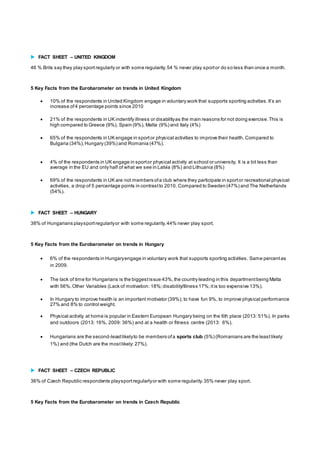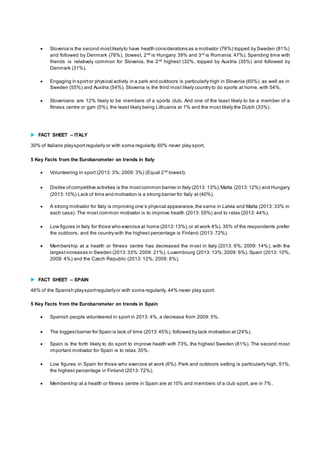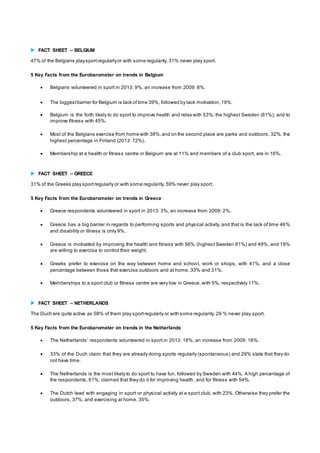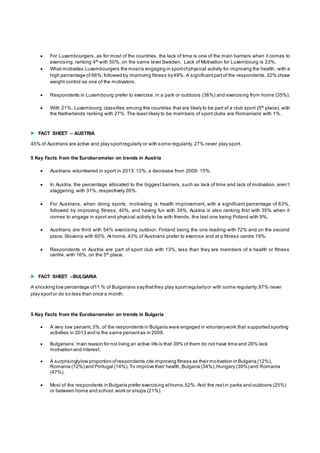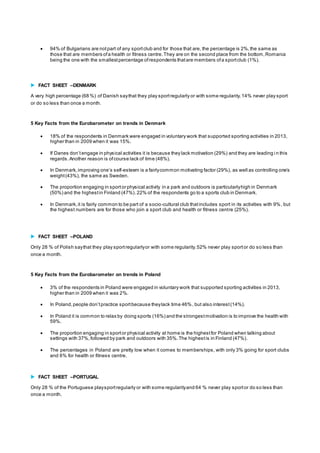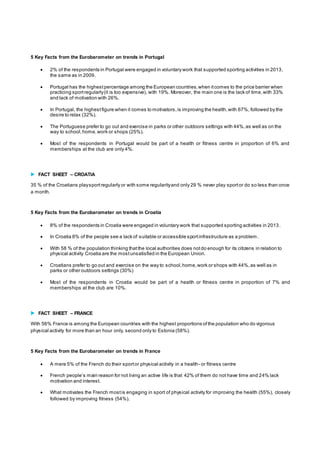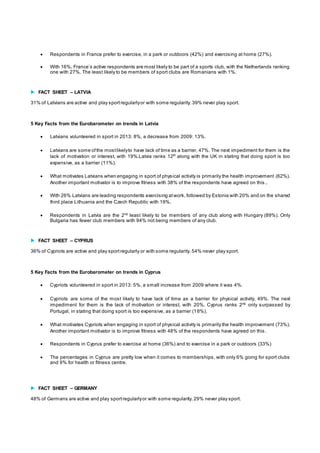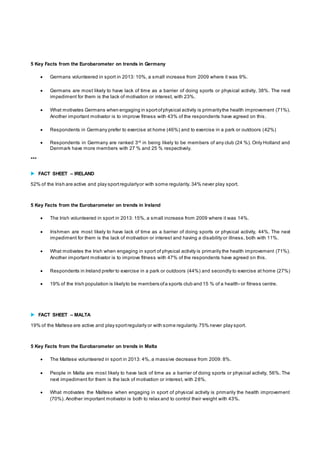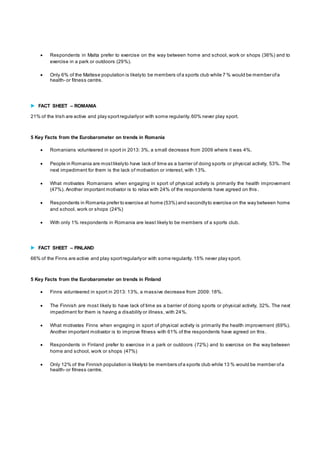The document provides fact sheets on sporting trends in various European countries based on Eurobarometer data. It summarizes key statistics on rates of regular sports participation, top barriers to exercise, popular locations and motivations for physical activity, and membership in sports clubs and gyms. There are significant differences between countries, such as Slovenia having the highest health-related motivation at 76% and Italy the lowest sports club membership at 6%. Overall, the document highlights national variations in sports engagement and barriers across Europe.
